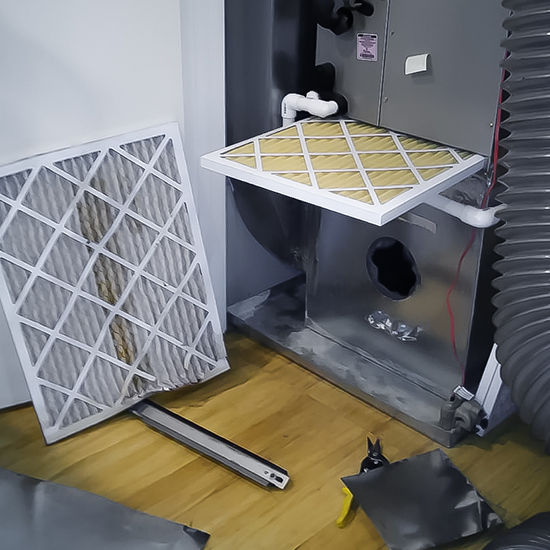Regarding maintaining a cozy environment in our homes and work environments, comprehending HVAC systems is essential. HVAC, which stands for heating, AC service , and air conditioning, holds a vital role in controlling indoor temperatures and air quality throughout the year. But with diverse options available, locating the appropriate system for your needs can seem overwhelming. This article intends to break down the differences between central and ductless HVAC systems, aiding homeowners make informed decisions about their HVAC choices.
As we explore central and ductless options, we'll cover how these systems operate, the benefits and drawbacks of each, and tips for choosing the right one for your living space. Whether you're enhancing an old system or anticipating a new installation, knowing how these HVAC choices contrast will empower you to establish a comfortable and energy-saving living space. Let's take a closer look at the world of HVAC and discover which system might be the best fit for your individual situation.
Grasping Heating, Ventilation, and Air Conditioning Systems
HVAC refers to heating, ventilation & air conditioning, and it encompasses the technology used to offer heating and cool solutions for home and industrial environments. Heating systems mechanisms warm the indoor environment during chilly months, while air conditioning systems lower the temperature of it down during the temperatures of summer. Proper ventilation is essential for ensuring clean air flows throughout the area, which not only enhances convenience but also is important in maintaining the quality of indoor air.
A standard HVAC system is made up of various elements functioning collaboratively. The essential elements include a furnace or heat generator for heating, an AC unit or cooling system for refrigeration, ductwork to distribute air, and a temperature control unit to control the temperature. Grasping how every component functions aids residents and property managers know how to maintain and fix their systems effectively.
As HVAC technology develops, new advancements emerge to improve energy effectiveness and indoor comfort. Smart HVAC units now integrate with smart home technologies, which enable more precise control and oversight. Additionally, options like ductless systems or ground-source heating offer alternative choices that can meet specific requirements, making it important for consumers to evaluate various choices when selecting an HVAC system for their space.
Frequent HVAC Problems and Solutions
Homeowners regularly face a range of HVAC issues that can impact comfort and performance. One common problem is inadequate heating or cooling, which can be caused by clogged filters, blocked vents, or an improperly sized system. Frequent maintenance, including air filter replacements and cleaning airflow pathways, can help alleviate these issues. If issues persist, it may be advisable to contact a professional for additional diagnosis or adjustments.
Another common issue is unusual noises coming from the HVAC system, such as banging, squeaking, or hissing. These sounds can suggest loose components, worn belts, or airflow blockages. Property owners should promptly address any strange noises by checking for loose parts or debris in the system. If the sounds continue, contacting an HVAC professional is advisable to prevent potential damage and ensure safety.
Lastly, high energy bills can signal that an HVAC system is not operating efficiently. Common culprits include inadequate insulation, outdated equipment, or neglecting routine maintenance. To combat this issue, homeowners should consider scheduling regular tune-ups to keep the system in peak condition and explore energy-efficient upgrades. Implementing smart thermostats and enhancing insulation can also contribute to reduced energy consumption and lower bills.
Energy Efficiency and Smart HVAC Choices

Determining the right HVAC solution is essential for enhancing energy efficiency in your house. Central HVAC systems tend to have greater upfront costs due to the complex installation of ductwork, but they can competently heat or cool more spacious rooms. Conversely, ductless HVAC systems, like mini-splits, offer versatility and targeted comfort, enabling you to cool or heat individual rooms bypassing ducts. This could lead to reduced energy consumption, especially if you have spaces that are infrequently used frequently.
Smart HVAC choices can further enhance energy efficiency. The use of smart thermostats permits homeowners to manage their HVAC systems from a distance and create routines that coordinate with their daily routines. This minimizes energy waste by making sure that heating or cooling happens when necessary. Additionally, various modern HVAC systems are built with energy efficiency ratings that educate consumers about anticipated energy use, aiding them to pick systems that best suit their needs.
Putting money into energy-efficient HVAC options not only contributes to lowering your energy bills but also positively impacts the environment. By opting for systems that use renewable energy sources, including solar-powered HVAC, you can reduce your carbon footprint. Regular maintenance and updates, such as the installation of high-efficiency air filters, boost overall system performance and indoor air quality, resulting in your home more comfortable and eco-friendly year-round.
